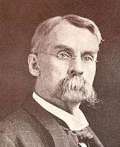So the senses have no relation whatever to the minuteness of the dose. The medical man is inclined to measure doses from the standard of a poisonous dose. He will measure off a little less than that which would poison, and call that a dose. It must be seen, it must yet be visible. This is not the test that Hahnemann offers. He offers the test of the dose as one capable of producing a slight aggravation of the symptoms. We see he does not limit attenuation, but he practically teaches it is unlimited, and the end has never been found.
There is a generally prevailing idea all over, not among strict Hahnemannians, but among modern homoeopaths in general, that the dose of medicine laid down by Hahnemann is too small to cure. It is a fatal error. An increase of the dose cannot make it more homoeopathic. The similarity of the remedy is first, and the dose is second. But that the dose of medicine laid down by Hahnemann is too small to cure is a fatal error. We must see by the experience in the clinics, and by considering the wonderful things that we have gone over in the doctrines, that we have really very little to do with the dose, that there is a wonderful latitude in dosage, and that we cannot lay down any fixed rule as to the best potency to use.
It ought to be distinctly felt, from all we have gone over, that he 30th potency is low enough to begin business with in any acute or chronic disease, but where the limit is no mortal can see. We want to follow up the series, so that we may get the very internal states that exist in degrees in the medicine. The different potencies are distinct from each other, some are very far apart, yet invariably connected. It is a mistake for any homoeopath to start out with the idea that the dose of medicine laid down by Hahnemann is too small to cure.
It shows that his mind is of material mould, that it is inelastic and cannot yield to the higher observations, and not capable of observing and following higher and higher as true experience would lead. Unless man has truth in his mind his experiences are false. Truth in the mind is first and then experiences are good. If his mind is in a state of truth, experiences are true. You cannot trust the experiences of men who do not know what is true, neither can they be led into truth by these fallacious experiences.


